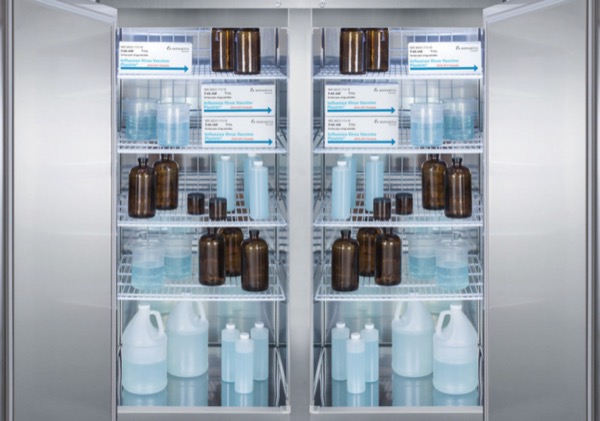
Most health-system pharmacies will outsource at least some of their sterile product compounding, which can be a useful option to navigate changing regulatory requirements, maintain supply during drug shortages, and compensate for operational and staffing challenges. But thorough 503B vendor evaluation is crucial to ensure product quality and patient safety, said presenters at the ASHP Midyear 2024 Clinical Meeting & Exhibition, in New Orleans.
When evaluating possible 503B vendors, there are several key factors to consider, said Garrett Eggers, PharmD, the associate chief of pharmacy at Cleveland Clinic.
- Product portfolio. “You don’t want to go through all of the work to evaluate the vendor, including site visits, and then ultimately decide that their product portfolio doesn’t match your needs,” Mr. Eggers said. “Something we come across frequently is that a vendor may offer vancomycin infusion, but it’s a different concentration than we use. It’s also important to think about redundancy. There is such value in having multiple vendors that provide the same product because in this space, there is frequent disruption of supply.”
- Licensure and registration. “This might seem pretty basic, but make sure [vendors] are licensed to distribute within your state,” Dr. Eggers said. “At one point, we were going back and forth with a possible vendor on a product for our home care space, but when we checked to make sure they were licensed in our state, they were not. That could have saved us a lot of time.” You can also check a 503B’s FDA registration status online at bit.ly/42U6ibr.
- Track record and regulatory compliance history. On that same FDA site, you can find how long the 503B has been registered; the date of its most recent FDA inspection; and any issued Form 483 warning letters, recalls and related actions. Dr. Eggers noted that some of the inspection reports may be redacted. “If that is the case, ask for those reports directly from the vendor,” he said. “The companies that we have found to be most reputable are very transparent about these reports, and they explain clearly what their remediation actions are. That’s a good sign of their commitment to quality.”
- Company structure, leadership and background. “What are the background and qualifications of those in key positions, such as CEO, quality officer, production managers and product development teams?” Dr. Eggers said. “As much as we as pharmacists feel that we really know this space, it’s very different than 503A compounding, so the leadership should definitely have background in other 503Bs or in pharma.” He noted that the production and operations side should be separate from the quality side, for optimal safety, and if that structure is not in place, it’s a potential red flag.
Next Step: Build a Task Force
After a vendor has passed these early checks, consider creating a task force for more in-depth evaluation, Dr. Eggers said. For a comprehensive perspective, the task force should include key stakeholders from various departments, including pharmacy, medication safety and finance.
“In-person site visits for a new 503B vendor are highly recommended, although I know there are budgetary constraints and other logistical challenges involved,” he said. “If you are not able to physically go on site to all potential vendors, at least make sure that the facility is able to set you up for a virtual tour.”
A site visit should give you a clear understanding of the vendor’s workflow and how materials and finished products move through inspection, labeling and clearance, Dr. Eggers said. “Is the workflow coming across each other, or is it linear that products aren’t coming back through the process with the potential for mislabeling? Ask how they are doing quality oversight. Some of the best vendors we have worked with have a microbiologist on staff, and they are doing very in-depth analysis to identify any [organism] growth they have, even in the non-critical spaces.”
Make sure you have visibility to production areas, he added, so that you can assess such factors as the use of automation and whether or not the vendor has dedicated versus open production rooms. “One thing that we found that surprised us was that there is not as much automation in these processes as we might have hoped,” he said. “A handful of vendors that we visited do use robots, but that is few and far between.”
Dr. Eggers also recommended evaluating service and ease of use. “There is a high variability in turnaround time that you will see from different vendors, as well as how easy it is to use their portal and order product.”
Avoid Sole-Source Contracting
Whenever possible, avoid sole-source relationships with 503B suppliers, Dr. Eggers cautioned. “I work with some vendors who are definitely interested in having you contract with them as the sole source for their products, and they may give you pricing benefits if you only buy from them. I would be very hesitant to go that route, because if they either exit the market or have an inspection that shuts them down, you’ll be scrambling to try to figure out how you can acquire those products.”
On the flip side, “if you try to establish relationships with 10 different vendors, that can be challenging as well, particularly during onboarding,” he noted. “It’s a pretty substantial commitment. In my experience, about four to five vendors is as many as I would recommend, because beyond that, continuing to monitor them and have quality control is definitely a challenge.”

Pharmacy leaders also should consider drug storage, beyond-use dates (BUDs), cost, safety and continuity of supply when determining which products to outsource, said Christopher Boreen, PharmD, MS, the director of drug policy and medication safety at the University of Iowa Health Care, in Iowa City.
One key driver of a move to 503B outsourcing can be the improvements in BUDs. “If there are certain products that we are compounding that have a BUD of 10 days refrigerated, these companies offer a lot of products that are 60-90-120 days room temperature. That has significant waste reduction and cost-savings implications,” he said, adding that extended BUDs also reduce the risk for having expired products in circulation. “If you have product that’s expiring every 10 or so days refrigerated, you really have to have tight operations to make sure that you’re removing that stock that’s expired on the units.”
In terms of promoting patient safety, Dr. Boreen recommended considering outsourcing products that have higher potential for compounding errors. “This would include some of those compounds that involve multiple different steps and are more labor-intensive, which makes them higher risk.”
The sources reported no relevant financial disclosures.
{RELATED-HORIZONTAL}

